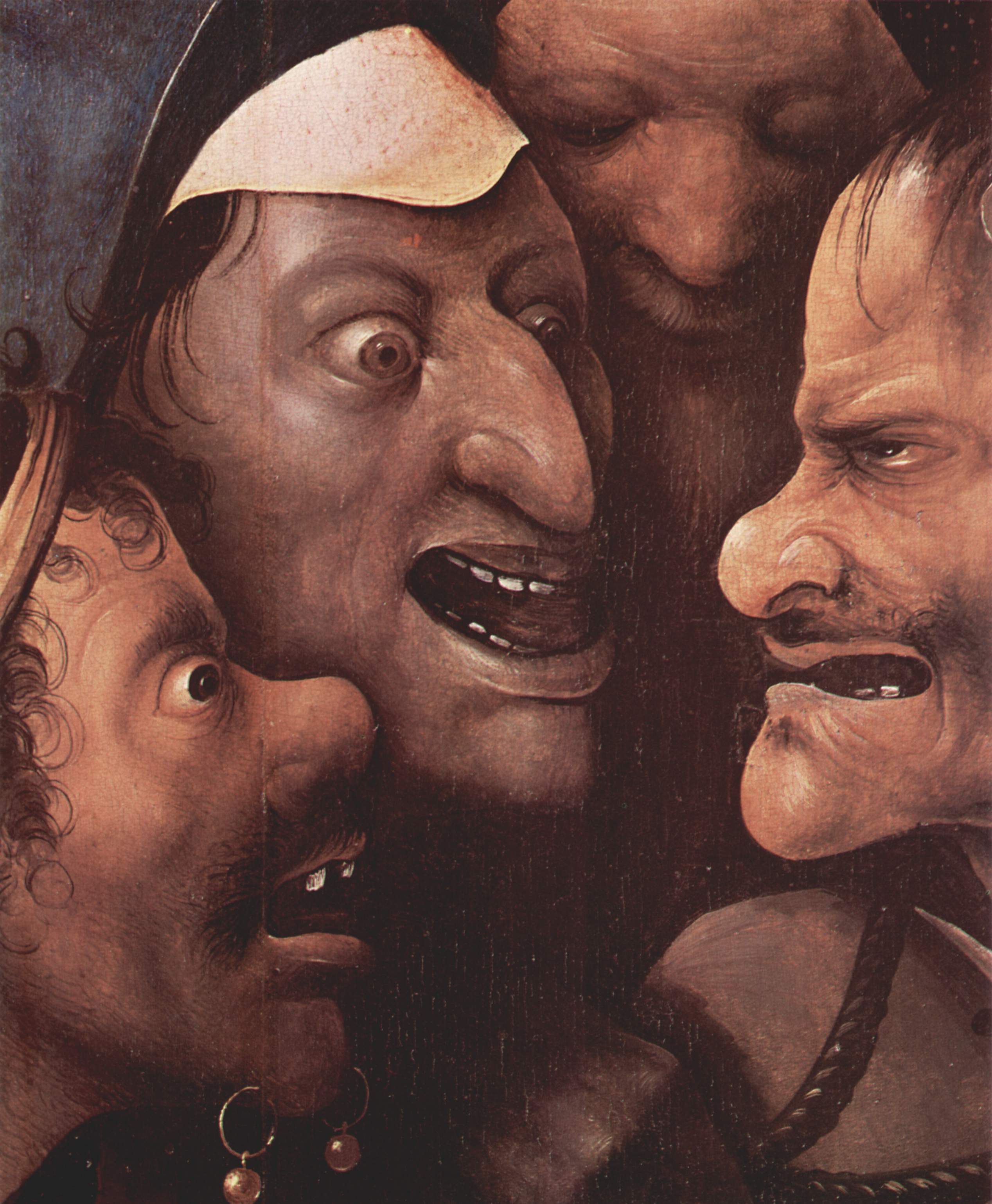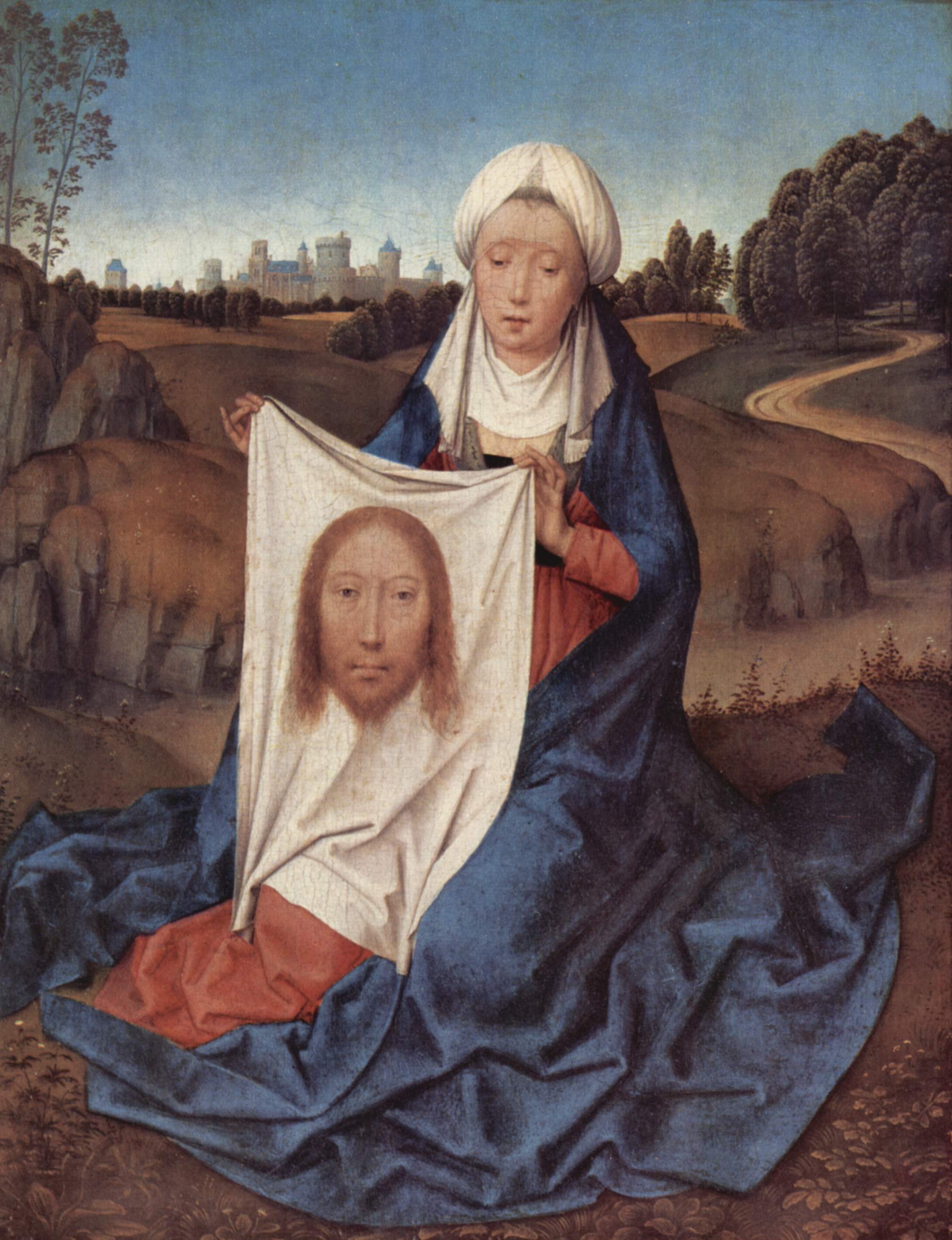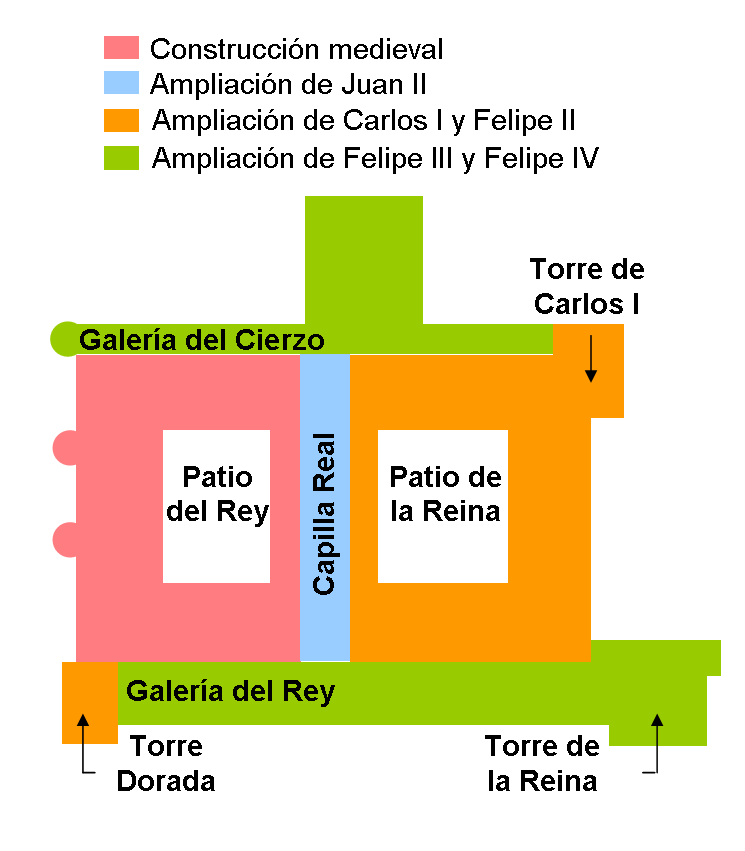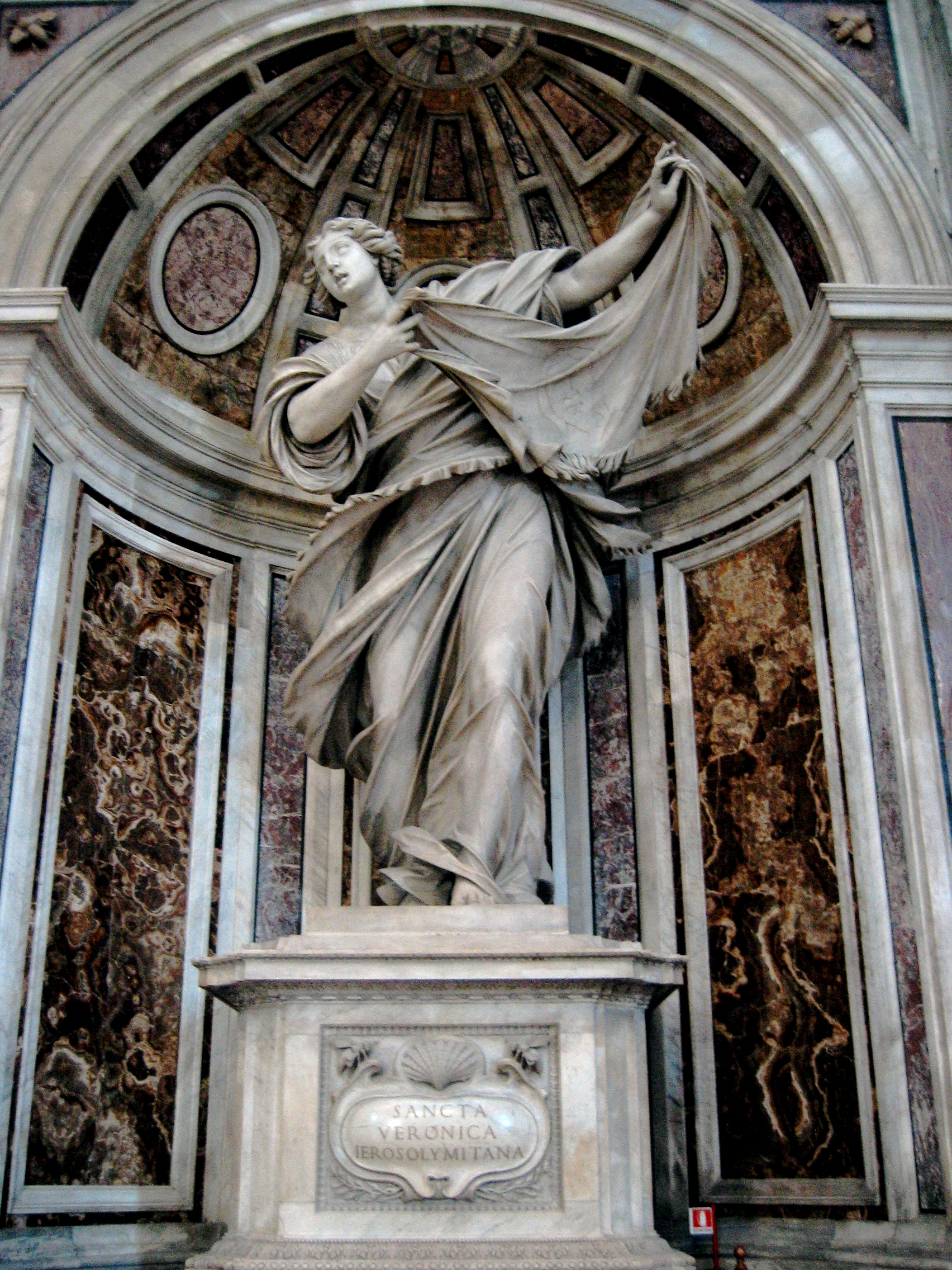|
Christ Carrying The Cross (Bosch, Ghent)
''Christ Carrying the Cross'' is a painting attributed to a follower of Hieronymus Bosch. It was painted in the early 16th century, presumably between 1500 and 1535. The work is housed in the Museum of Fine Arts in Ghent, Belgium. The painting is notable for its use of caricature to provide grotesque-looking faces surrounding Jesus. History The work was bought by the Museum of Fine Arts, Ghent in 1902, and was restored in 1956–1957. As for all Bosch related works, the dating is uncertain, although most art historians assigned it to his late career. The catalogue of the Bosch exhibition held in Rotterdam in 2001 assigned it 1510–1535, attributing the execution to an imitator. According to one of the authors, Bernard Vermet, that it is not as typical for Bosch is generally accepted and he finds it hard to believe that it was painted by the same painter as the '' Christ Crowned with Thorns'' in the National Gallery in London. Moreover, the colours remind him of the Mannerists ... [...More Info...] [...Related Items...] OR: [Wikipedia] [Google] [Baidu] |
Hieronymus Bosch
Hieronymus Bosch (, ; born Jheronimus van Aken ; – 9 August 1516) was a Dutch/Netherlandish painter from Brabant. He is one of the most notable representatives of the Early Netherlandish painting school. His work, generally oil on oak wood, mainly contains fantastic illustrations of religious concepts and narratives. Within his lifetime his work was collected in the Netherlands, Austria, and Spain, and widely copied, especially his macabre and nightmarish depictions of hell. Little is known of Bosch's life, though there are some records. He spent most of it in the town of 's-Hertogenbosch, where he was born in his grandfather's house. The roots of his forefathers are in Nijmegen and Aachen (which is visible in his surname: Van Aken). His pessimistic fantastical style cast a wide influence on northern art of the 16th century, with Pieter Bruegel the Elder being his best-known follower. Today, Bosch is seen as a hugely individualistic painter with deep insight into ... [...More Info...] [...Related Items...] OR: [Wikipedia] [Google] [Baidu] |
Veil Of Veronica
The Veil of Veronica, or (Latin for sweat-cloth), also known as the Vernicle and often called simply the Veronica, is a Christian relic consisting of a piece of cloth said to bear an image of the Holy Face of Jesus produced by other than human means (an '' acheiropoieton'', "made without hand"). Various existing images have been claimed to be the original relic, as well as early copies of it; representations of it are also known as vernicles. The story of the image's origin is related to the sixth Station of the Cross, wherein Saint Veronica, encountering Jesus along the Via Dolorosa to Calvary, wipes the blood and sweat from his face with her veil. According to some versions, St. Veronica later traveled to Rome to present the cloth to the Roman Emperor Tiberius. The veil has been said to quench thirst, cure blindness, and even raise the dead. The first written evidence of the story is from the Middle Ages, and during the 14th century, the veil became a central icon in the Wes ... [...More Info...] [...Related Items...] OR: [Wikipedia] [Google] [Baidu] |
Paintings By Hieronymus Bosch
Painting is the practice of applying paint, pigment, color or other medium to a solid surface (called the "matrix" or "support"). The medium is commonly applied to the base with a brush, but other implements, such as knives, sponges, and airbrushes, can be used. In art, the term ''painting ''describes both the act and the result of the action (the final work is called "a painting"). The support for paintings includes such surfaces as walls, paper, canvas, wood, glass, lacquer, pottery, leaf, copper and concrete, and the painting may incorporate multiple other materials, including sand, clay, paper, plaster, gold leaf, and even whole objects. Painting is an important form in the visual arts, bringing in elements such as drawing, composition, gesture (as in gestural painting), narration (as in narrative art), and abstraction (as in abstract art). Paintings can be naturalistic and representational (as in still life and landscape painting), photographic, abstract, narrative, sy ... [...More Info...] [...Related Items...] OR: [Wikipedia] [Google] [Baidu] |
Paintings In The Collection Of The Museum Of Fine Arts, Ghent
Painting is the practice of applying paint, pigment, color or other medium to a solid surface (called the "matrix" or "support"). The medium is commonly applied to the base with a brush, but other implements, such as knives, sponges, and airbrushes, can be used. In art, the term ''painting ''describes both the act and the result of the action (the final work is called "a painting"). The support for paintings includes such surfaces as walls, paper, canvas, wood, glass, lacquer, pottery, leaf, copper and concrete, and the painting may incorporate multiple other materials, including sand, clay, paper, plaster, gold leaf, and even whole objects. Painting is an important form in the visual arts, bringing in elements such as drawing, composition, gesture (as in gestural painting), narration (as in narrative art), and abstraction (as in abstract art). Paintings can be naturalistic and representational (as in still life and landscape painting), photographic, abstract, narrative, s ... [...More Info...] [...Related Items...] OR: [Wikipedia] [Google] [Baidu] |
1516 Paintings
__NOTOC__ Year 1516 ( MDXVI) was a leap year starting on Tuesday (link will display the full calendar) of the Julian calendar. Events January–June * January – Juan Díaz de Solís discovers the Río de la Plata (in future Argentina). * January 23 – With the death of Ferdinand II of Aragon, his grandson, Charles of Ghent, becomes King of Spain; his mother Queen Joanna of Castile also succeeds as Queen of Aragon and co-monarch with Carlos, but remains confined at Tordesillas. * March 1 – Desiderius Erasmus publishes a new Greek edition of the New Testament, ''Novum Instrumentum omne'', in Basel. * March 29 – The Venetian Ghetto is instituted in the Republic of Venice. * April 23 – The Reinheitsgebot is instituted in Ingolstadt, Bavaria, regulating the purity of beer permissible for sale. July–December * July – Selim I of the Ottoman Empire declares war on the Mamluk Sultanate of Cairo and invades Syria. * August 13 ... [...More Info...] [...Related Items...] OR: [Wikipedia] [Google] [Baidu] |
Vienna
en, Viennese , iso_code = AT-9 , registration_plate = W , postal_code_type = Postal code , postal_code = , timezone = CET , utc_offset = +1 , timezone_DST = CEST , utc_offset_DST = +2 , blank_name = Vehicle registration , blank_info = W , blank1_name = GDP , blank1_info = € 96.5 billion (2020) , blank2_name = GDP per capita , blank2_info = € 50,400 (2020) , blank_name_sec1 = HDI (2019) , blank_info_sec1 = 0.947 · 1st of 9 , blank3_name = Seats in the Federal Council , blank3_info = , blank_name_sec2 = GeoTLD , blank_info_sec2 = .wien , website = , footnotes = , image_blank_emblem = Wien logo.svg , blank_emblem_size = Vienna ( ; german: Wien ; ba ... [...More Info...] [...Related Items...] OR: [Wikipedia] [Google] [Baidu] |
Kunsthistorisches Museum
The Kunsthistorisches Museum ( "Museum of Art History", often referred to as the "Museum of Fine Arts") is an art museum in Vienna, Austria. Housed in its festive palatial building on the Vienna Ring Road, it is crowned with an octagonal dome. The term ''Kunsthistorisches Museum'' applies to both the institution and the main building. It is the largest art museum in the country and one of the most important museums worldwide. Emperor Franz Joseph I of Austria-Hungary opened the facility around 1891 at the same time as the Natural History Museum, Vienna which has a similar design and is directly across Maria-Theresien-Platz. The two buildings were constructed between 1871 and 1891 according to plans by Gottfried Semper and Baron Karl von Hasenauer. The emperor commissioned the two Ringstraße museums to create a suitable home for the Habsburgs' formidable art collection and to make it accessible to the general public. The buildings are rectangular in shape, with symmetrical ... [...More Info...] [...Related Items...] OR: [Wikipedia] [Google] [Baidu] |
Christ Carrying The Cross (Bosch, Vienna)
''Christ Carrying the Cross'' is an oil on panel painting by Hieronymus Bosch, executed in the most likely ''c.'' 1490-1500. It is at the Kunsthistorisches Museum, in Vienna, Austria Austria, , bar, Östareich officially the Republic of Austria, is a country in the southern part of Central Europe, lying in the Eastern Alps. It is a federation of nine states, one of which is the capital, Vienna, the most populous .... '' Christ Child with a Walking Frame'' is painted on the back of this painting. See also * ''Christ Carrying the Cross'' (Bosch, Ghent) * ''Christ Carrying the Cross'' (Bosch, Madrid) External links''Christ Carrying The Cross'' 1480s at http://www.hieronymus-bosch.org 1480s paintings Paintings by Hieronymus Bosch Bosch Paintings in the collection of the Kunsthistorisches Museum {{15C-painting-stub ... [...More Info...] [...Related Items...] OR: [Wikipedia] [Google] [Baidu] |
Royal Palace Of Madrid
The Royal Palace of Madrid ( es, Palacio Real de Madrid) is the official residence of the Spanish royal family at the city of Madrid, although now used only for state ceremonies. The palace has of floor space and contains 3,418 rooms. It is the largest royal palace in Europe. The palace is now open to the public, except during state functions, although it is so large that only a selection of rooms are on the visitor route at any one time, the route being changed every few months. An admission fee of €13 is charged; however, at some times it is free. The palace is owned by the Spanish state and administered by the Patrimonio Nacional, a public agency of the Ministry of the Presidency. The palace is on Calle de Bailén ("Bailén Street") in the western part of downtown Madrid, east of the Manzanares River, and is accessible from the Ópera metro station. Felipe VI and the royal family do not reside in the palace, choosing instead the Palace of Zarzuela in El Pardo. The palace ... [...More Info...] [...Related Items...] OR: [Wikipedia] [Google] [Baidu] |
Christ Carrying The Cross (Bosch, Madrid)
''Christ Carrying the Cross'' is an oil on panel painting by Hieronymus Bosch. The date of this painting is ''c.'' 1505–1507. It is held resides at Palacio Real, in Madrid Madrid ( , ) is the capital and most populous city of Spain. The city has almost 3.4 million inhabitants and a metropolitan area population of approximately 6.7 million. It is the second-largest city in the European Union (EU), and .... See also * ''Christ Carrying the Cross'' (Bosch, Vienna) * ''Christ Carrying the Cross'' (Bosch, Ghent) External links''Christ Carrying the Cross'' at Web Gallery of Art Paintings by Hieronymus Bosch Bosch Paintings in the Royal Palace of Madrid {{16C-painting-stub ... [...More Info...] [...Related Items...] OR: [Wikipedia] [Google] [Baidu] |
Simon Of Cyrene
Simon of Cyrene (, Standard Hebrew ''Šimʿon'', Tiberian Hebrew ''Šimʿôn''; , ''Simōn Kyrēnaios''; ) was the man compelled by the Romans to carry the cross of Jesus of Nazareth as Jesus was taken to his crucifixion, according to all three Synoptic Gospels: He was also the father of the disciples Rufus and Alexander. Background Cyrene was located in northern Africa in eastern Libya. A Greco-Egyptian city in the province of Cyrenaica, it had a Jewish community where 100,000 Judean Jews had been forced to settle during the reign of Ptolemy Soter (323–285 BC) and was an early center of Christianity. The Cyrenian Jews had a synagogue in Jerusalem, where many went for annual feasts. Biblical accounts Simon's act of carrying the cross, ''patibulum'' (crossbeam in Latin), for Jesus is the fifth or seventh of the Stations of the Cross. Some interpret the passage as indicating that Simon was chosen because he may have shown sympathy with Jesus. Others point out that the text it ... [...More Info...] [...Related Items...] OR: [Wikipedia] [Google] [Baidu] |
Saint Veronica
Saint Veronica, also known as Berenike, was a woman from Jerusalem who lived in the 1st century AD, according to extra-biblical Christian sacred tradition. A celebrated saint in many pious Christian countries, the 17th-century ''Acta Sanctorum'' published by the Bollandists listed her feast under July 12, but the German Jesuit scholar Joseph Braun cited her commemoration in ''Festi Marianni'' on 13 January. According to Church tradition, Veronica was moved with sympathy seeing Jesus carrying the cross to Calvary and gave him her veil so that he could wipe his forehead. Jesus accepted the offer, and when he returned the veil the image of his face was miraculously captured on it. The resulting relic became known as the Veil of Veronica. The story of Veronica is celebrated in the sixth Station of the Cross in many Anglican, Catholic, and Western Orthodox churches.Vatican WebsitSixth Station/ref> Background There is no reference to the story of Veronica and her veil in the ... [...More Info...] [...Related Items...] OR: [Wikipedia] [Google] [Baidu] |








